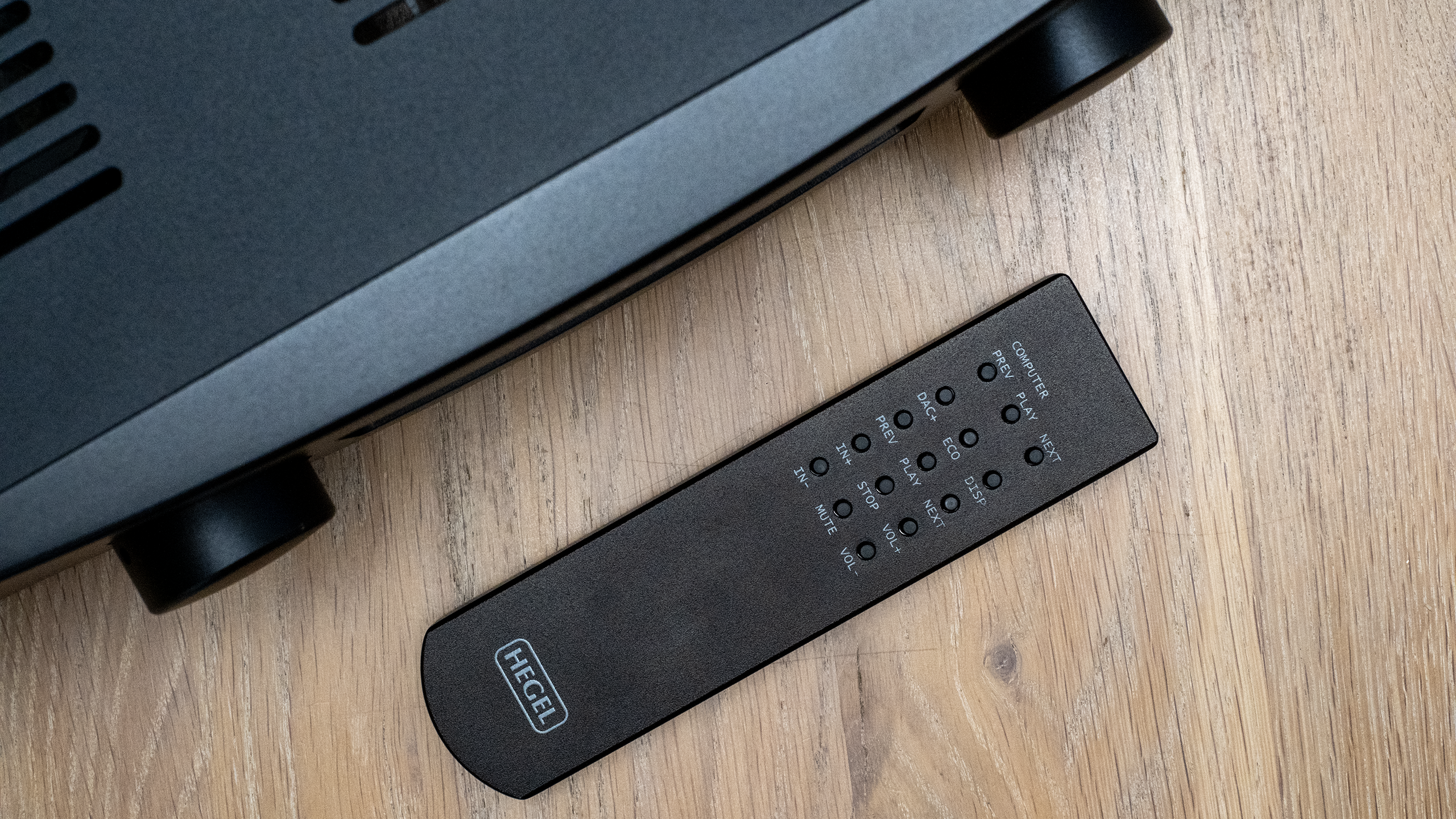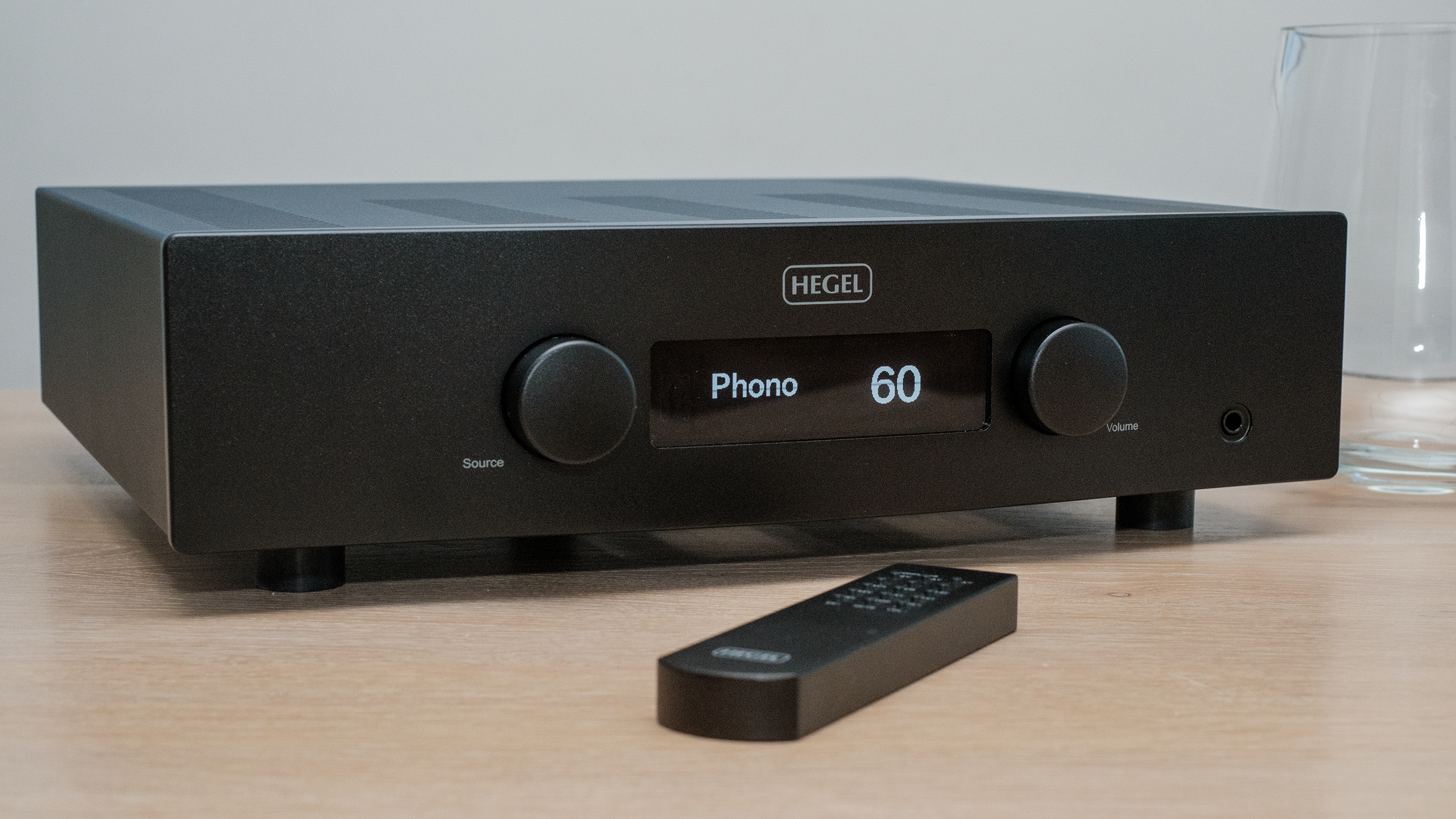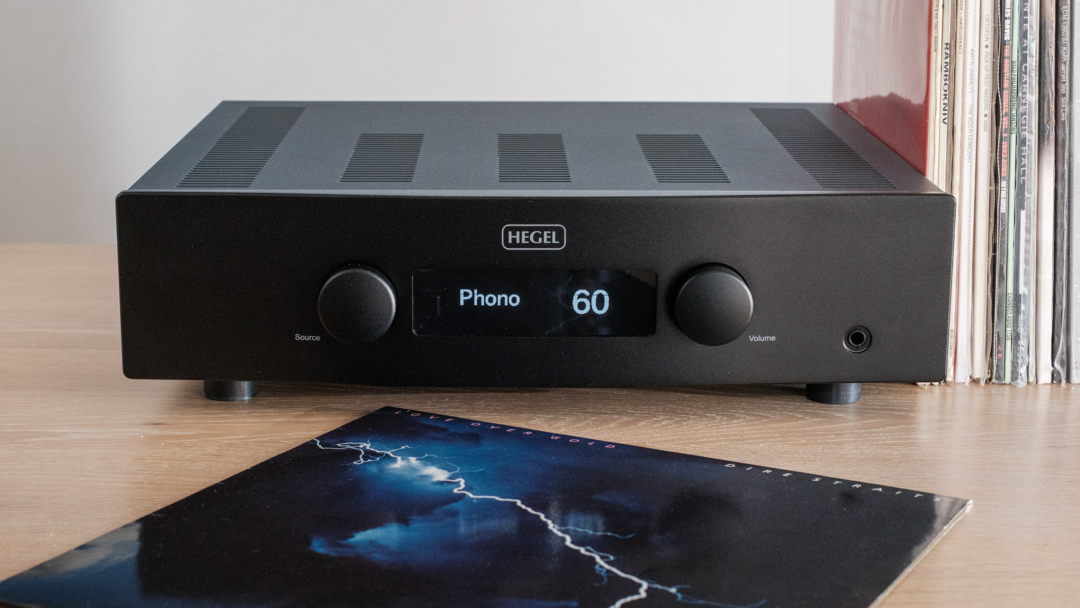From a cynical point of view, one could argue that perhaps it was time for a successor. After all, the Hegel H190 is their oldest amplifier, and seven years after its debut, perhaps it’s time for a sequel? It’s definitely coming, just not any time soon, but this one will.
The Hegel H190V is not new, nor is it the fifth edition – because V is not a Roman numeral for five. But V for Vinyl.
Yep, you read that right. The amplifier has a turntable input, for the first time ever in a Hegel amplifier. Who would have thought? But then again, not many people thought Bent Holter and his team would make a turntable amplifier – a phono stage, if you will. But what happened? After years of pestering from people like us, they came up with the V10 phono stage three years ago.
It's a mystery why Hegel has not done this before. Their first phono preamp succeeds on all essential points.
The same V10 has been the donor for the turntable input on the new version of the H190. Which, with the exception of this particular model, is the same as the model you’ve been able to buy since 2017.

Here you get a powerful 2 x 150 W integrated amplifier, with streaming with AirPlay 2 and DLNA via the Ethernet input on the back, built-in DAC (24-bit/192 kHz) and digital inputs – and a balanced input for balanced audio sources. It also has analogue input/output and now also a turntable input.
Damping factor again
Marantz Model 30 is a magnificent amplifier for both eyes and ears, and the quality goes beyond most things.
With the exception of the turntable input, the amplifier is identical to the previous version. The same SoundEngine 2 technology that we know from the flagship H600, among other things, is also found here. SoundEngine is Bent Holter’s way of removing distortion and lowering noise levels and is a trademark of Hegel’s amplifiers. There’s also a damping factor, which Bent Holter believes is essential for a neutral sound with good bass control. Here, the damping factor is listed at more than 4,000, and this high number is one of the reasons why we were very excited about how much control the amplifier had when we tested it in 2017. Especially in the bass.

Moving Magnet only
The Hegel V10 has small DIP switches on the back where you can adjust gain and impedance. This is not the case on the H190V, which has a turntable input exclusively for Moving Magnet pickups. It has enough gain that it can also be used if you have an MC pickup with a high output voltage. Otherwise, connect a step up between the MC pickup and the MM input. For example, Pro-Ject’s excellent MC Step Up Box S3.

Anders Ertzeid from Hegel revealed in a podcast at the end of the year that they had an H190V on the way. Anders said that the MM input is built around the MM circuit in the V10, just without the customisation options.
Why MM but not MC?
“We chose an MM input for two reasons. An MC input is much more sensitive to noise, and an amplifier with a large toroidal transformer and lots of power components would not have worked well – without a big investment. Originally, we didn’t want a turntable input in an amplifier at all.”

Same sound as the original
Hegel claims that the rest of the amplifier is exactly as we know it from our test of the H190. The only difference between the two amplifiers is the turntable input.
We have previously tested the H190 on a pair of Dynaudio Special Forty and with the H190V on the same speakers, and in principle there should be no difference in sound quality. Yet there is a subtle difference that I didn’t expect. Not after Anders said that the amplifier part is the same as before. The soundstage and all the qualities of its predecessor are identical, but the H190V is surprisingly a little tighter with better defined bass.
The larger Sonus faber Maxima Amator has even more bass and a bigger soundstage than the small Dynaudio speakers. When connected to the Hegel amplifier, the subtle difference became a little clearer. Especially in the bass.
I haven’t been able to detect any other differences, so there’s hardly any reason to ditch your H190 and buy an H190V. Unless you’re longing for a Hegel with MM input.
The Hegel H390 amp is a real explosion of power, which at half the price of the H590 gives almost the same listening pleasure.
Which for many will be an argument in favour of choosing the H190V. The input to the turntable is excellent. It is very quiet and allows the music to pass through unhindered. Exactly as it should. Okay, the sound stage doesn’t have the same openness and attention to detail as a Hegel V10 – understandably, but the sound from vinyl is more open and rich than from the MM input on the otherwise phenomenally good Yamaha R-N2000A.

With Polarity from Hoff Ensemble on your turntable, the sound is big and open. The dynamics of percussion are reproduced with a physical authority that is often perceived as muffled on the MM input of integrated amplifiers. The sound is more open and there is more deep bass here than on the MM input of a Marantz Model 30.
The Hegel H600 isn't just more expensive than its predecessor. It's also much better.
Radka Toneff’s silky smooth vocals on the legendary Fairytales album are beautifully rendered with a warm and natural sound. Small nuances spice up the sound and the only thing I miss is a little sharper focus. The piano sound is a little muffled and the reverberation of some of the notes doesn’t hang as weightlessly in the room as with a separate phono stage. Like the aforementioned V10 or Primare R35.

Conclusion
With a turntable input, an already excellent amplifier has become even more attractive. Hegel has clearly not succumbed to the temptation to hastily put together a random MM circuit for the H190V. Fortunately, they have chosen their own, as we know from the Hegel V10. With this, the H190V has suddenly become the most interesting integrated amplifier for anyone who needs a good phono stage for an MM pickup. All the other qualities have been retained, and with streaming, analogue and digital inputs, the Hegel H190V is still one of the best buys in its class. Seven years after its debut.

We think
Powerhouse with massive control, very good sound resolution, wired networking and turntable input. Turntable input only for MM and high output MC with no adjustment options.
3800 €
Specifications
- Type: Integrated amplifier
- Output power: 2 x 150 W 8 Ohm
- Technology: SoundEngine 2, transistor
- Connections: 2 unbalanced, XLR in, line in/out, turntable, USB-B, coaxial, 3 x optical
- Turntable input: Moving Magnet, 47 kOhm
- Headphone output: 6.3 mm jack
- DAC: 24-bit/192 kHz
- Network: AirPlay 2, DLNA, Ethernet
- Frequency range: 5 Hz – 100 kHz
- Dynamic range: Not stated
- THD: 0.01%, 25 W/8 Ω/1 kHz
- Signal to noise: 100 dB
- Other: Remote control, OLED display, Roon ready.
- Dimensions and weight: 43 x 12 x 41 cm/17 kg
- Web: hegel.com


Hi, I think Hegel looses a bit of their personality with trying to integrate all possible source components directly – now adding for me simple mm phono preamp. 4100 Eur is quite a summ of bucks. I will personaly prefere solid analogue amp for those money (e.g. Rega Aethos). I am a turntable guy with two decks and 6 cartridges. Amp for 4100 Euro is not fitting well with cheap Project deck and some cheap Ortofon MM. This is missleading. Such amp need machine like Rega Planar8 with solide MC cartridge (Apheta3 or Lyra Delos or similar) to shine. Than you need phono preamp like Hegel V10 which is very good. For me MM preamp in such amp is just for “test and try” but nor for focussed listening. On the other hand I admire Hegel, for their high quality of digital interfaces in integrated amps. This is their main strenght, they should keep focus in this direction. Just my opinion.
I home auditioned the Hegel H190 on a pair of B&W N805. Returned it and used the money to buy a used Exposure 2510 and Rega Elex R, both of which I strongly prefered! For me I think even the Brio would sound more like music, but I realize that’s likely a matter of taste. Now swapped for Rega Aethos, which is heavenly! 😍